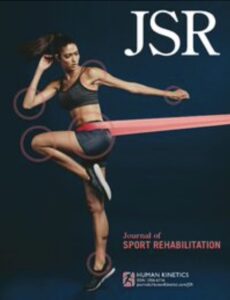Publications

Effects of Aquatic Therapy on Gait Symmetry and Muscle Properties Following Anterior Cruciate Ligament Reconstruction: A Pilot Randomized Controlled Trial
Authors: Zekun Liu 1, Xin Zhang 1, Shuyuan Yan 1, Chi Zhang 2, Donghui Chen 3, Ting Zhang 4, Xiang Liu 5, Yang Sun 6, Ligang Cui 6, Shilun Hou 1, Lin Song 1
Affiliations:
- School of Sports Medicine and Rehabilitation, Beijing Sport University, Beijing, BJ, China
- Department of Biomedical Sciences, Beijing City University, Beijing, BJ, China
- Department of Intelligent Rehabilitation, Beijing Noitom Technology Ltd, Beijing, BJ, China
- International Aquatic Therapy Association of China, Beijing, BJ, China
- Department of Rehabilitation Medicine, United Family Women’s & Children’s Hospital, Beijing, BJ, China
- Department of Ultrasound, Peking University Third Hospital, Beijing, BJ, China
Journal: Journal of Sport Rehabilitation - July 2025, Ahead of Print (DOI: 10.1123/jsr.2024-0128)
-
Field & Applications:
- Medical
- Treatment evaluation
- Orthopedics
- Physiotherapy
- Recovery from injury
- Musculoskeletal rehabilitation
The objective of this pilot study was to compare the effects of aquatic therapy and land-based rehabilitation on gait symmetry and muscle properties following anterior cruciate ligament reconstruction (ACLR).
The study comprised 20 postoperative ACLR patients in a pilot randomized controlled trial. Participants were divided into 2 groups: an aquatic therapy group (n = 10) and a land-based rehabilitation group (n = 10). Both rehabilitation programs were tailored to individual patient needs. Gait parameters were assessed using a high-speed camera before and after the intervention, while muscle tone and stiffness were measured using MyotonPRO.
The study findings reveal a significant difference in step length symmetry between the 2 groups postintervention. Within-group analysis showcased noteworthy improvements in the aquatic therapy group, including enhanced single-support phase duration symmetry, reduced vastus lateralis muscle tone on the affected side, and enhanced hamstring muscle tone on the affected side. Conversely, the land-based rehabilitation group demonstrated significant increases in stiffness solely within the affected vastus lateralis.
The study suggests aquatic therapy as a viable postoperative option following ACLR. While land-based rehabilitation has its benefits, aquatic therapy shows superior effectiveness in normalizing gait symmetry and restoring muscle properties.
Keywords: hydrotherapy, gait analysis, muscle tone, muscle stiffness
In summary, this pilot study suggests that aquatic therapy is a safe and feasible exercise for postoperative ACLR patients. It also compared the effects of aquatic therapy and land-based rehabilitation on gait symmetry and muscle properties. The results suggested that aquatic therapy was more effective in restoring normal step length symmetry. However, no significant differences were found between the 2 interventions regarding the quadriceps and hamstrings muscle tone and stiffness. Based on these findings, aquatic therapy may serve as a safe and effective exercise option for promoting gait recovery. Although the sample size was relatively small, the findings are encouraging and support the need for further large-scale, long-term clinical trials to comprehensively investigate the effects of aquatic therapy in postoperative ACLR patients.


